Give Them the Tools
An innovative program empowers our youth to reclaim their mental health
In recent months, we’ve shared a lot about the state of mental health of the young people in our country and here in the Inland Empire, where Reach Out operates. It’s undoubtedly a crisis, as pointed out by Dr. Rocha in her talk at this year’s National Innovative Communities Conference, and the statistics are chilling. Numbers like these (suicide is the second leading cause of death among those 15 -24 years old; nearly 20% of high school students report serious thoughts of suicide) lead most reasonable people to ask one question: What can we do?
Reach Out is working hard on the answer to this question, and that work has culminated in the launch of their Intervention Specialist program, currently entering its second year of active work in the Chaffey Joint Union High School District.
What is an intervention specialist?
Neither teacher nor staff member, nor technically a therapist, Intervention Specialists are specially trained counselors who staff on-campus wellness centers. These specialists are equipped with a wealth of information and knowledge about the variety of situations that teens might bring into the centers with them, and while they are not licensed therapists, they are trained to refer serious issues to appropriate personnel.
Sophia Juárez, director of the program for Reach Out, explained the need the wellness centers address in the nine high schools where they are currently active. She explained that during the lockdown period of the pandemic, many youth in the IE experienced isolation, violence, abuse, or grief at home. Many of our kids returned to school dealing with issues they didn’t have the tools to address on their own, and these kinds of big feelings can turn into anger issues, depression, substance abuse, and even violence.
“Our intervention specialists are there to help them learn to self-soothe and teach them how to manage their anger issues. And this is an opportunity for the kids to go in and learn, where they're given the tools to properly handle their emotions, so then they can go out and navigate in the moment without one of our intervention specialists holding their hand. One of the philosophies I like to use is: we educate them to equip them to empower them.”
Modeling Healthy Adult Relationships
Sophia, along with Intervention Specialist Program Managers Alyssa Montano and Josh Davis, talked about the wellness centers and those who staff them as adults offering the teens on campus a safe space. For some, it may be enough to just come in and sit, taking time to breathe and unwind. “We really work to make the centers welcoming to kids,” Alyssa noted. “We’ll have bean bag chairs and music playing, there are different activities and spaces where kids can read or journal.”
Not all kids come in ready to unload their issues, and for many of them, trust is a key factor. “The program really puts the power back in the kids’ hands, and we let them know that we’re there if they want to talk, but that they also have the option of just getting a break. In fact, letting a kid who’s clearly struggling know that they don’t have to talk is often the key to unlocking that closed door,” Alyssa said. “Just letting them know they have that opportunity is critical. Especially if they never created a connection with a teacher or a counselor, because their trust in adults may have been broken in the past. We work hard at creating that place for them to just have that space and use it how they'd like to. Most of the time, once trust is established, kids are eager to talk. They need to.”
Sophia agreed, “I say this often to the staff, but this could potentially be the only healthy relationship these kids have with an adult.”
Intervention Specialists See and Hear the Kids of the IE
The heart of this program lies with the intervention specialists themselves. Each specialist goes through a comprehensive training and participates in ongoing training weekly, sharing best practices and key strategies. But beyond training, these are people who really want to make a difference to kids, who really believe in the impact they can have, one life at a time.
“Sometimes,” Josh Davis noted, “It’s as simple as breathing. Giving a child the means to self-regulate, to know that they’ve got the tools to handle whatever they’re facing, is something that brings joy to these specialists. And beyond that, it’s about letting each individual know that their voice is heard, regardless of their truancy or substance abuse, or whatever issues they’ve got going on. Those issues don’t define them.”
“We want to focus on letting kids know that their feelings matter, that they matter, and on giving them a safe space and tools to work through some really difficult challenges,” Sophia said.
Via individualized conversations, a safe space to unwind, and a focus on arming small groups of students struggling with similar issues with tools to address those problems, the intervention specialists are making a real impact on the population of the Chaffey Joint Union High School District. According to last year’s records, more than 1500 members of the student population in the district signed into a wellness center at least once, with a total of more than 5,400 total visits. That’s an astounding amount of impact for a first-year program, and those at the helm of this effort expect to see that number increase. Via focused assessments geared toward generating data about issues and usage, Reach Out is working to build definitive proof that this program changes - and saves - lives.
The Need is There
There is no question that the need for this type of resource-building intervention is there, and the number of students touched in year one only serves to emphasize that reality.
“Sadly enough, we see so many things, so many situations come in and out of our wellness centers. But the best part is that we know that what we're doing is potentially impacting these lives long term,” Sophia said.
And for the kid whose life is impacted for the better? That should be evidence enough that this program is working.
Still, there are many more kids than there is funding for this program, something Reach Out hopes to help change. “We’d love to see funding for this program to expand to other districts,” Sophia noted. “And we’re working on it.”
To learn more about the Intervention Specialist program and other efforts Reach Out is making on behalf of the kids of the Inland Empire, click here.
Destigmatizing Mental Healthcare for our Young People
A Tactical Guide for Concerned Community Members
Based on the talk at the 2023 National Innovative Communities Conference by Dr. Evita Limon-Rocha
Mental health is a critical part of our overall health, and young people are especially susceptible to some of the more pernicious outcomes of mental health issues. Young people are at the mercy of their rapidly changing biologies during a tumultuous historical period in our country, and depending on their community and family situation, additional external stresses can come into play on their mental states.
Unfortunately, the mental health stigma in our country is a major barrier to getting help, especially for this vulnerable population. This article will discuss:
- The prevalence of mental health problems in young people
- The impact of stigma, and
- How we can work to destigmatize mental healthcare.
Prevalence of Mental Health Problems in Young People
The data is clear: mental health problems are on the rise among young people. In 2020, 4.1 million adolescents in the United States had at least one major depressive episode, and 14.8 million adults had at least one major depressive episode with severe impairment. Additionally, persistent feelings of sadness or hopelessness have increased 40% among high school students between 2009 and 2019.
These statistics are alarming, but they are not surprising. Young people are facing a number of challenges that can contribute to mental health problems, including bullying, social media pressure, academic stress, and family conflict.
Impact of Stigma
Mental health stigma is a major barrier to getting help. People who are struggling with mental health problems often feel ashamed or embarrassed, and they may be afraid of being judged or discriminated against. This can prevent them from seeking help, which can lead to much worse outcomes.
Stigma can also have a negative impact on the mental health of young people. Studies have shown that stigma can increase the risk of depression, anxiety, and suicidal thoughts. It can also make it more difficult for young people to cope with stress and challenges.
How We Can Destigmatize Mental Healthcare
There are a number of big-picture things that we can do to destigmatize mental healthcare. At the end of this post, we’ll suggest some tactical strategies and immediate actions we can all take to help anyone who might be struggling.
- First, we need to talk about mental health more openly. We need to challenge the stereotypes and misconceptions about mental illness. We also need to make sure that young people have access to accurate information about mental health.
- Second, we need to support mental health education in schools. This education should teach young people about the signs and symptoms of mental health problems, as well as how to get help.
- Third, we need to change the way that we talk about mental illness in the media. The media often portrays mental illness in a negative light, which can contribute to stigma. We need to demand more positive and accurate portrayals of mental illness in the media.
- Finally, we need to be role models for young people. If we want to destigmatize mental healthcare, we need to be open about our own mental health experiences. We need to show young people that it is okay to talk about mental health, and that it is okay to seek help.
Actionable Ideas for Destigmatizing Mental Health in Your Community
- Activate the power of connectedness: Feeling connected to school, peers, and adults can be protective against mental health problems, so working together to create places, groups, forums, and communities where people can come together to pursue common interests or goals can be helpful. This could be anything from a book club to a craft night at a local coffee shop. It could be an online forum to talk about a hobby or a school club that meets at lunch to work on a common goal.
- Model the importance of self-care: It is important to recognize signs of stress and burnout in ourselves and others, so that we can take care of ourselves and our communities. As parents, friends, and leaders, we can model this critical focus by talking about how we take care of ourselves. Discuss the ways you blow off stress with the young people in your life. Invite them to take a walk with you, or watch a movie. Talk about meditation or the way you sometimes just close your eyes and breathe, remembering what you feel gratitude for in your life.
- Create safe spaces: It is important to create safe spaces where people feel comfortable talking about their mental health. This could be a physical space, such as a therapist's office or a support group, or it could be a virtual space, such as an online forum or chat room.
- Ask open-ended questions: When talking about mental health, it is important to ask open-ended questions. This allows the person to share their thoughts and feelings without feeling judged. For example, instead of asking "Are you feeling depressed?" you might ask "How are you feeling today?"
- Address stigma openly: When people are afraid to talk about their mental health, they are less likely to seek help. This can lead to the development of more serious mental health problems. By addressing stigma, we can help people to get the help they need.
What to Do if Someone Close to You is Struggling
Understanding the issues our youth are facing and how they may be internalizing the stress and conflict from some of those issues is good. Talking about it is one step closer to removing stigma. If you believe someone close to you is struggling with their mental health, don’t assume they will figure it out. Offer to be the understanding ear they might need, and take action if necessary.
Understand the difference between anxiety and depression
Anxiety and depression are both common mental health problems, but they are different. Anxiety is characterized by excessive worry and fear, while depression is characterized by sadness, loss of interest, and changes in sleep and appetite. Educate yourself so that you can help the young people in your life recognize these common issues and assist them in finding help.
Signs and symptoms of anxiety and depression: Anxiety and depression can manifest in a variety of ways, but some common signs and symptoms include:
- Persistent sadness or hopelessness
- Changes in appetite or sleep
- Difficulty concentrating or making decisions
- Irritability or anger
- Fatigue or loss of energy
- Thoughts of death or suicide
Reach Out for Help
If you or someone you know is struggling with mental health problems, please reach out for help:
- There are many resources available, including hotlines, websites, and support groups. Start here:
- The National Alliance on Mental Illness (NAMI): https://www.nami.org/
- The Jed Foundation: https://www.jedfoundation.org/
- The American Foundation for Suicide Prevention: https://afsp.org/
- The Trevor Project: https://www.thetrevorproject.org/
Be a Stigma Warrior and Help Our Young People Thrive
Mental health is an important part of overall health, and it is especially important for young people. Mental health stigma is a major barrier to getting help, but there are a number of things that we can do to destigmatize mental healthcare. By talking about mental health more openly, supporting mental health education in schools, and changing the way that we talk about mental illness in the media, we can help to create a more supportive environment for young people who are struggling with mental health problems.



